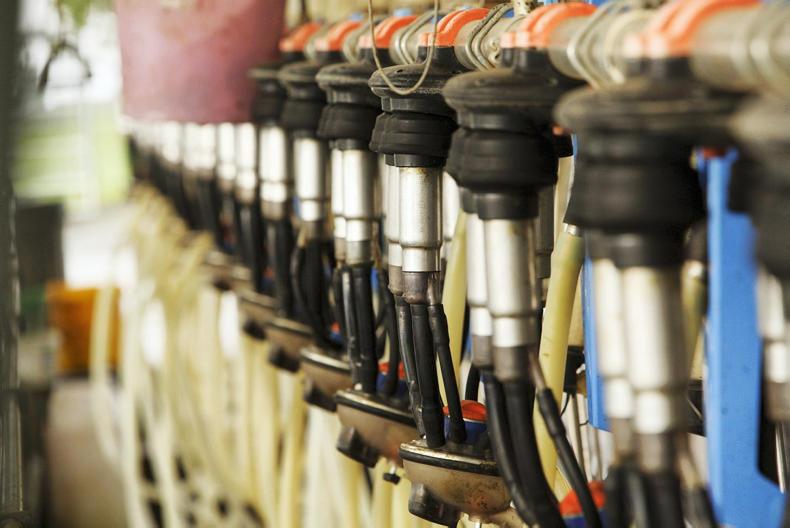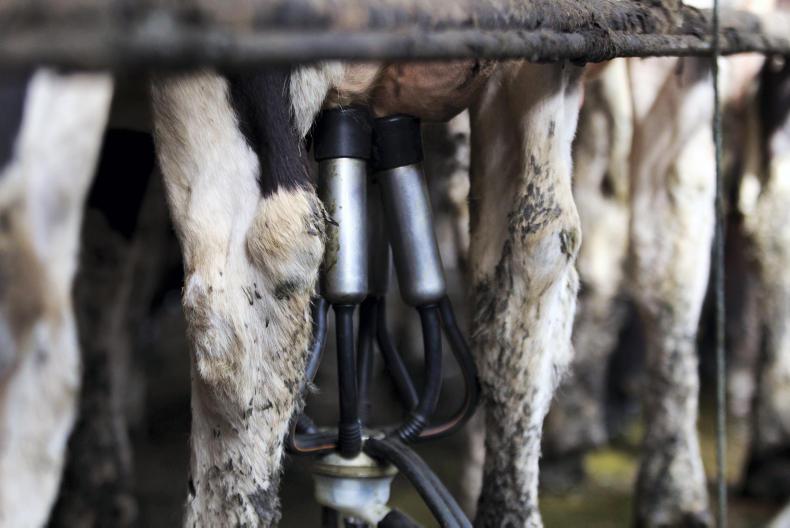1.Water heating
Heating water is the second largest use of energy on a dairy farm. Hot water is needed for washing the milking machine and bulk tank.
Obviously, the frequency of hot washing has a huge impact on the costs involved.
As a rough guide, it costs 1c to heat 1l of water to 80 degrees Celsius on night rate electricity and 2c/l to heat water to the same temperature on day rate.
There is a big variation in the amount of hot washes being completed on farms.
Some farmers use hot wash after every milking, others once a day and many others just hot wash once a week.
The number of hot washes required will vary depending on the type of cleaning agents used and the type of equipment being washed.
There are three ways of heating water; using electricity, oil or gas.
What option to go for depends on the amount of hot water required and this is dependent on the number of units. Generally speaking you need 10l of hot water per milking unit.
You also need hot water for the bulk tank. The bulk tank will need about 2% of its capacity for a hot wash, so a 10,000l tank will need 200l of hot water for a wash, every second day.

John Upton in Moorepark says that for a 20 unit milking parlour using a hot wash once a day and a 10,000l bulk tank, a farmer using electricity would be better off installing two 300l electrical water heaters.
One of the heaters should be just for the bulk tank and programmed to heat water to 65 degrees Celsius while the other one should be for the milking machine and programmed to heat to 80 degrees.
Both should run on night rate electricity.
In this scenario, the farmer would be using 300l of water a day at a heating cost of €3/day. The capital costs are the costs of the heaters, which are roughly €500 each and another €500 for a water softener, if necessary.
A water softener will greatly extend the life of the heater and reduce the running costs as water will be heated faster where there is no limescale.
Looking at the alternatives, the installation costs for oil and gas are usually a good bit higher, and while the running costs can be lower, generally speaking you would need to be using high volumes of hot water (more than 300l/day) to justify the expenditure.
The advantages of gas are that the hot water is instant, with no hot water storage requirements. The other advantage, relative to oil is that it is a cleaner fuel and it cannot be stolen.
The cost of heating with oil will vary depending on oil prices.
2. Energy use
The milking parlour is one of the biggest consumers of energy on the farm.
Teagasc research has shown that the main usage of electricity on dairy farms is in milk cooling, accounting for 31% of all electricity usage.
This is followed by water heating which accounts for 23% of all electricity usage and then milking itself which accounts for 20% of all electricity usage.
The average cost of electricity usage on farms is €5 per 1,000l of milk produced.
The research, which was carried out by John Upton in Moorepark, showed a massive variation in the results, ranging from €2.60 to €8.70 per 1,000l of milk produced.
Before spending any money to reduce electrical consumption, there is low hanging fruit to be picked first.
Night rate electricity is half the price of day rate electricity so night rate should be used as much as possible. The night rate hours are from 11pm to 8am in winter time and from 12 midnight to 9am in summer time.
A night rate meter must be installed to get the night rate. The standing charge for night rate is higher than the day rate so a minimum of 1.5 units of electricity should be used at night rate to get the benefits of switching.
This shouldn’t be hard to achieve considering that one hour of water heating uses up around 1.5 units and it takes six hours of heating to fully heat up a standard water heater.
All water heating and one milking per day (particularly during summer time) should be done on night rate to reduce energy costs.
3. Milk cooling
Reducing energy consumption is another matter. Looking at the biggest consumer, milk cooling, there is a lot that can be done to reduce consumption in this area.
A functioning plate cooler is a must. This reduces the temperature of the milk before it reaches the bulk tank, meaning the bulk tank has less work to do to cool the milk and will run for less time.
For a plate cooler to work effectively, twice as much water as milk should be going through it.
This water should then be recycled and used elsewhere such as washing yards or for filling water troughs.

The most efficient plate coolers will bring the milk temperature down to within five degrees Celsius as the water so the lower the water temperature is the better.
Water coming directly from a well is usually the coldest. However, most plate coolers on Irish farms are not operating efficiently because there’s not enough water going through them.
A solenoid valve can be installed on the water pipe to shut off the water when no milk is flowing. Adding on extra plates to an existing plate cooler only has a modest effect in improving performance.






 This is a subscriber-only article
This is a subscriber-only article







SHARING OPTIONS: